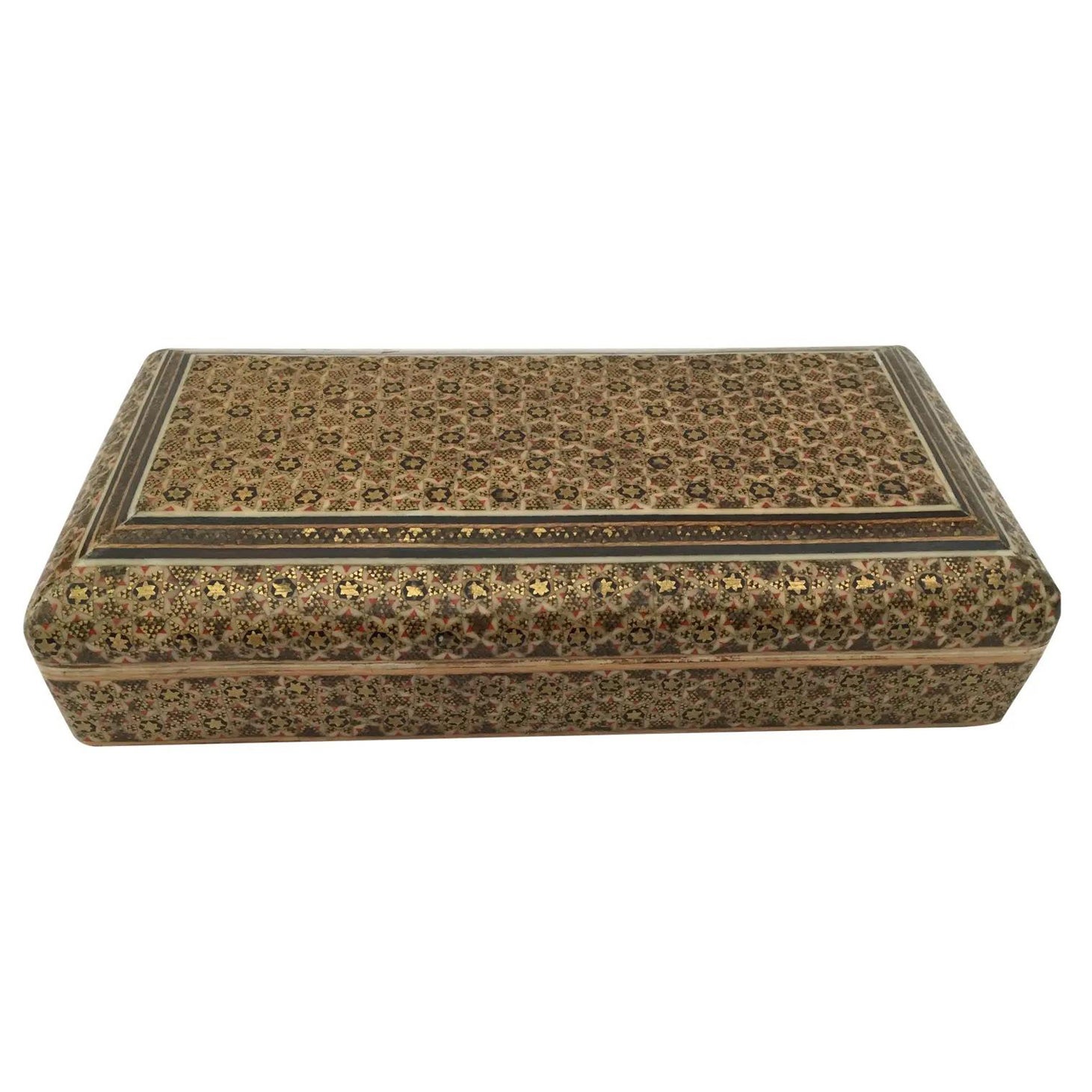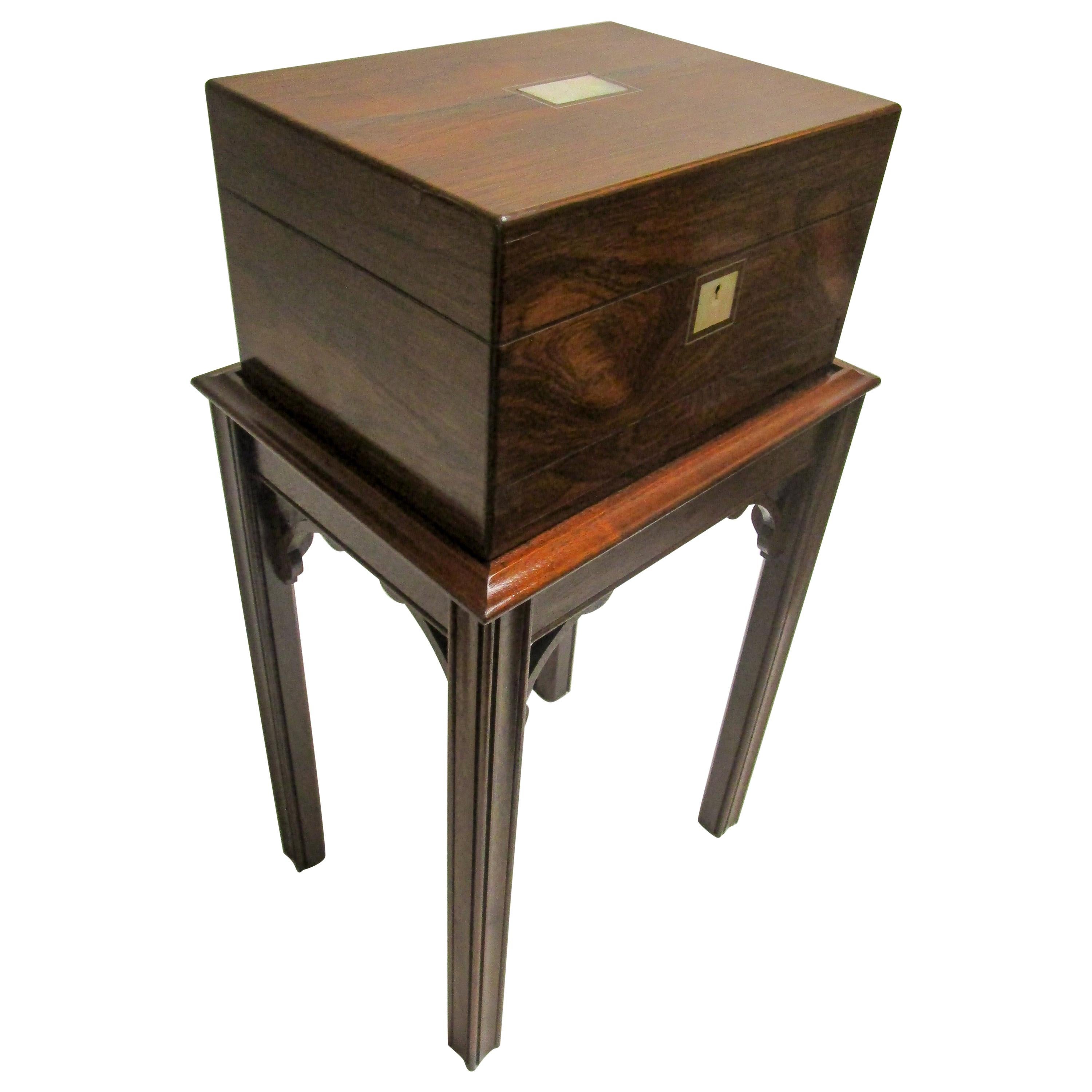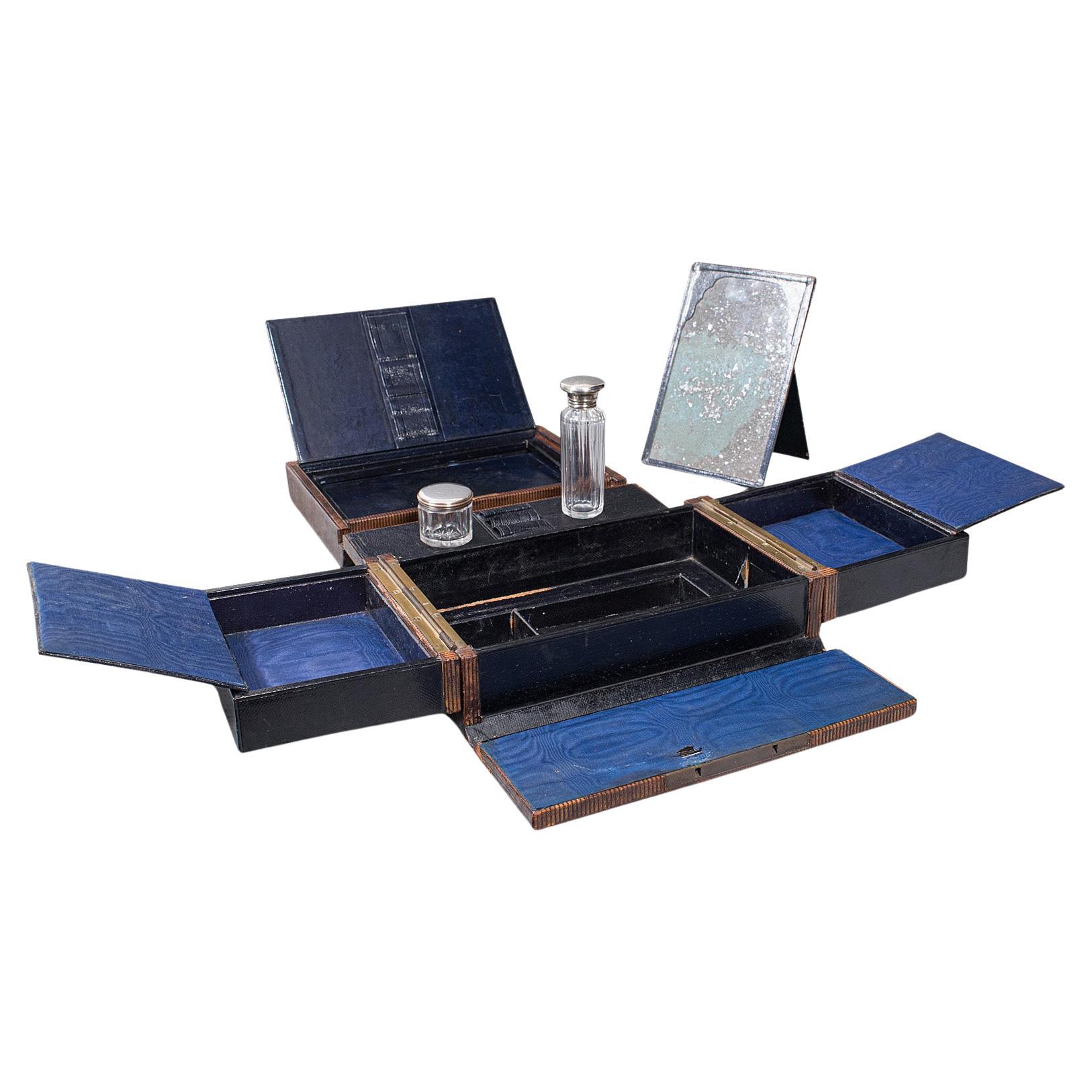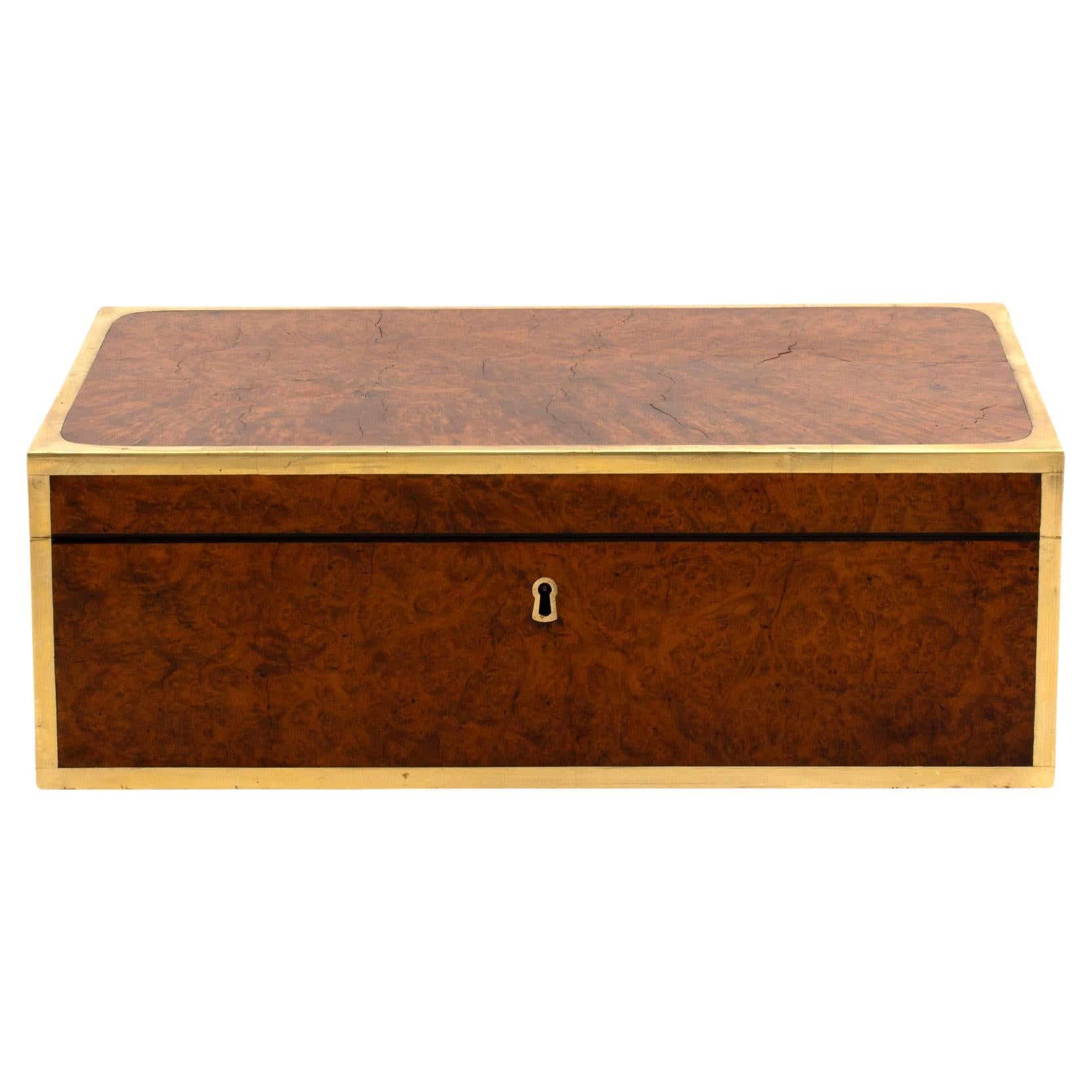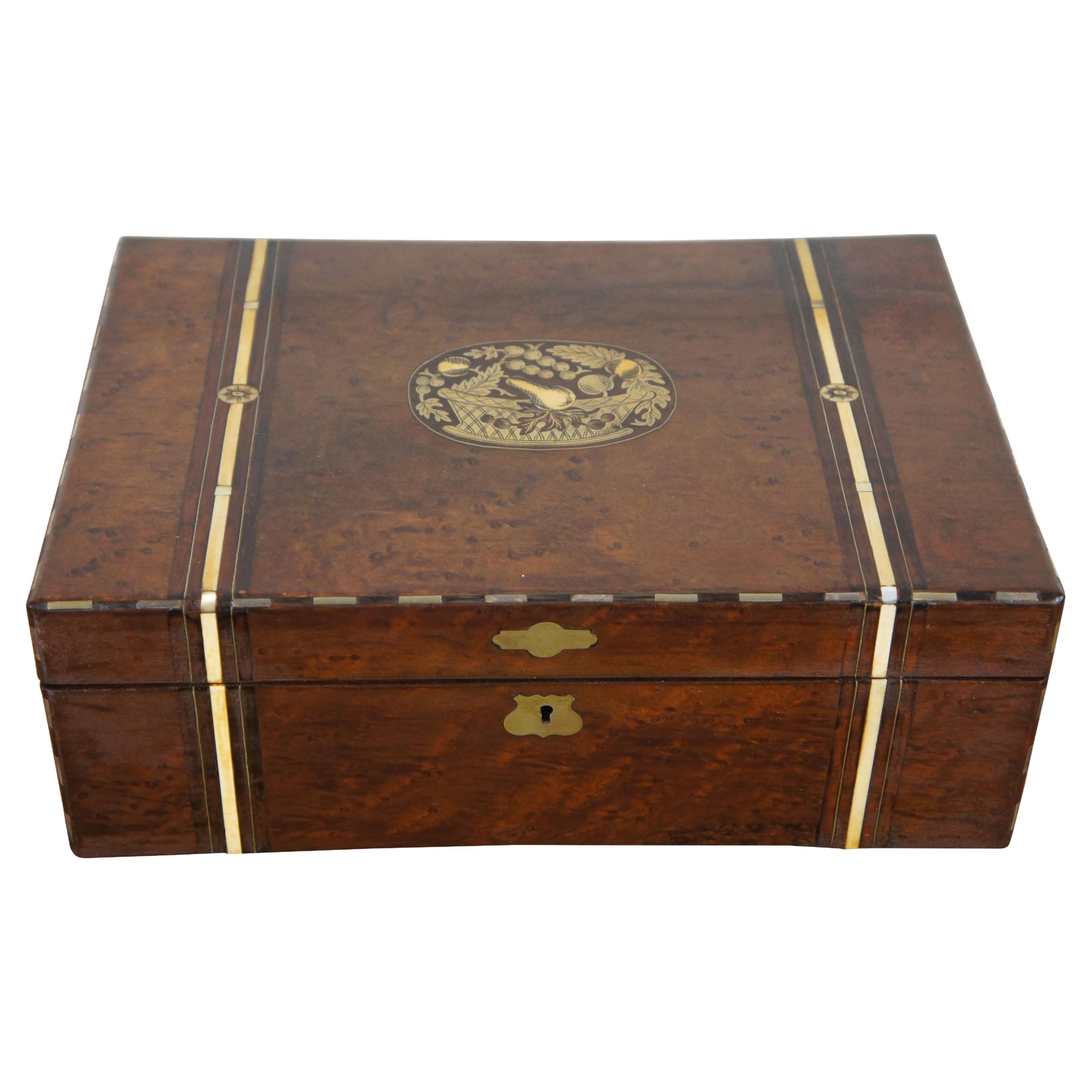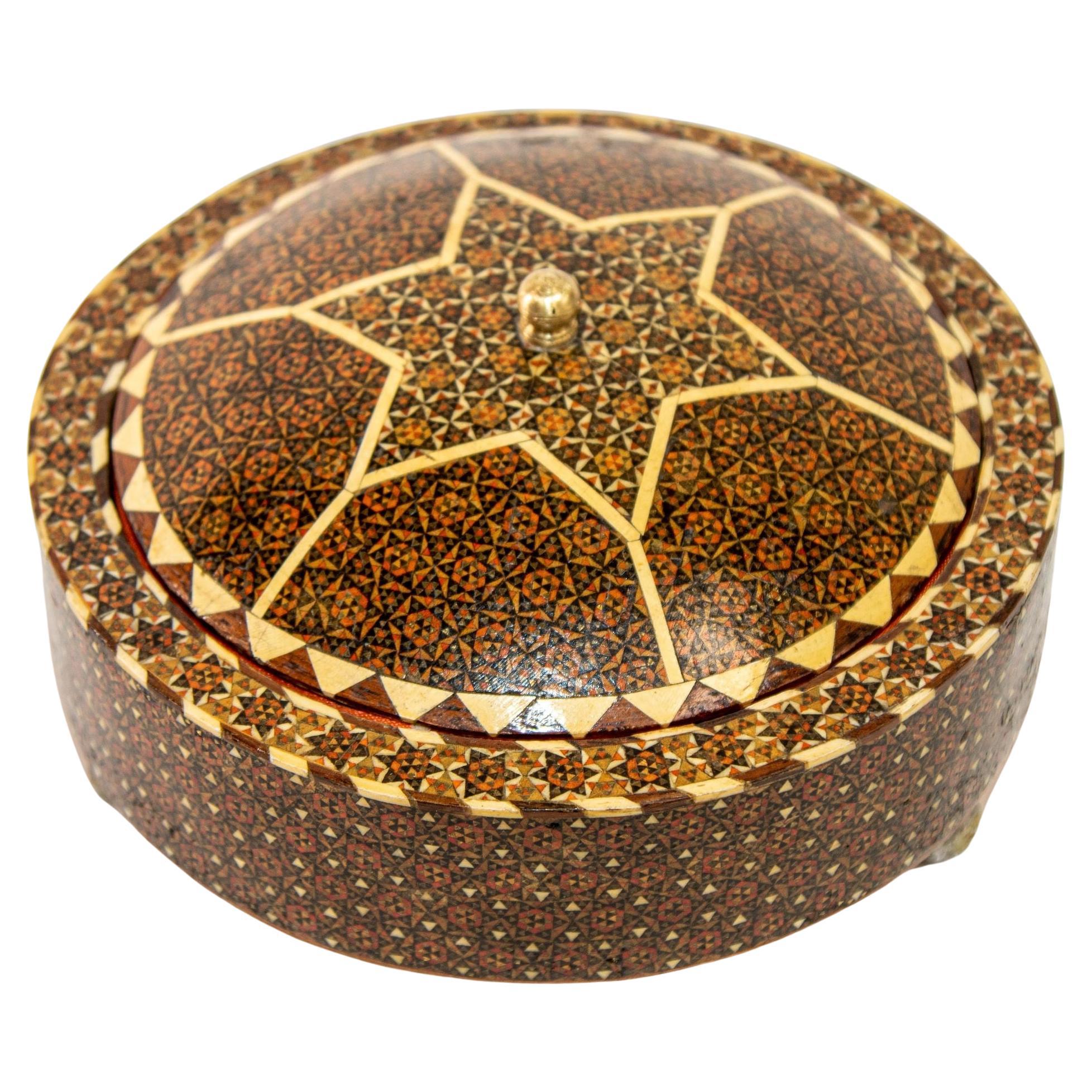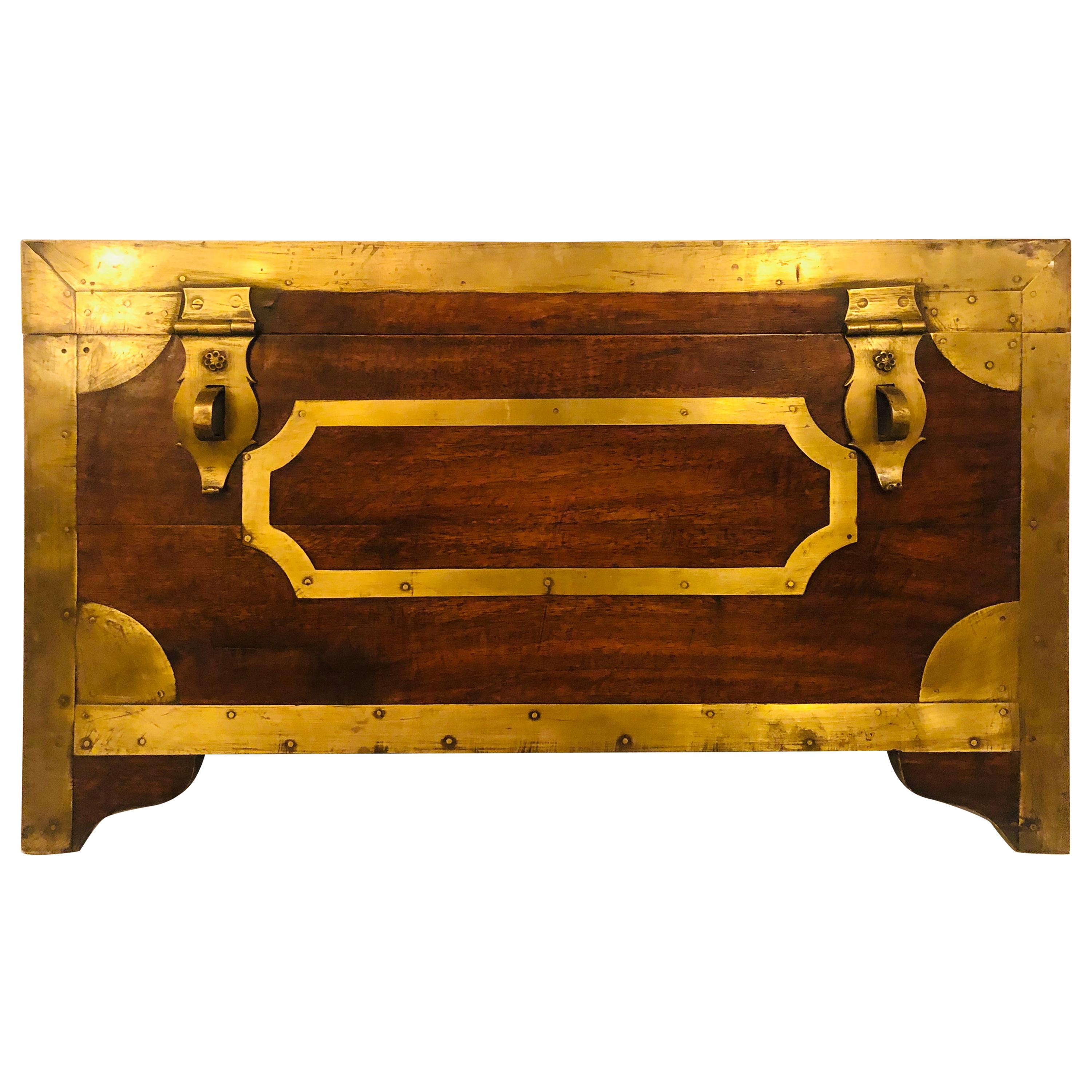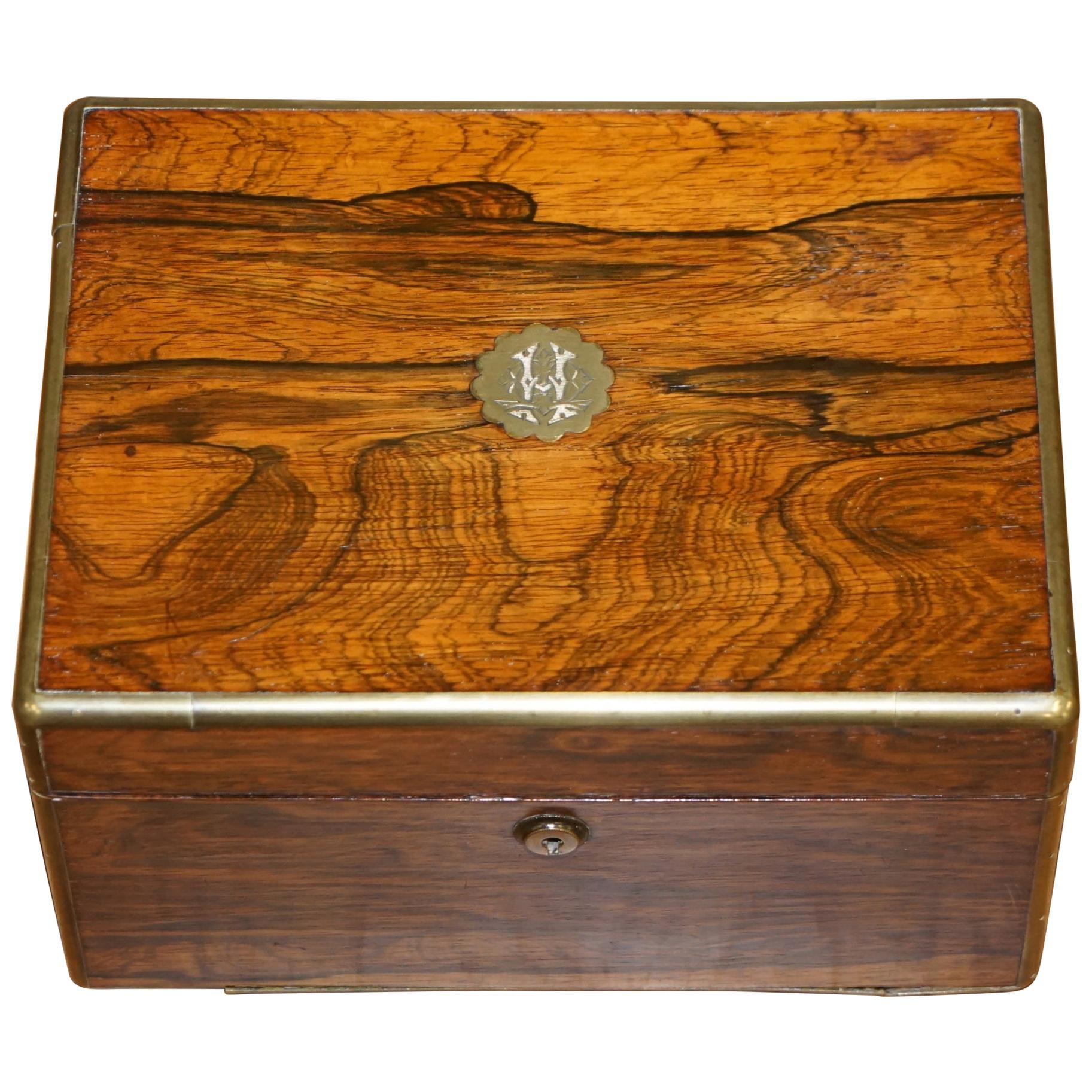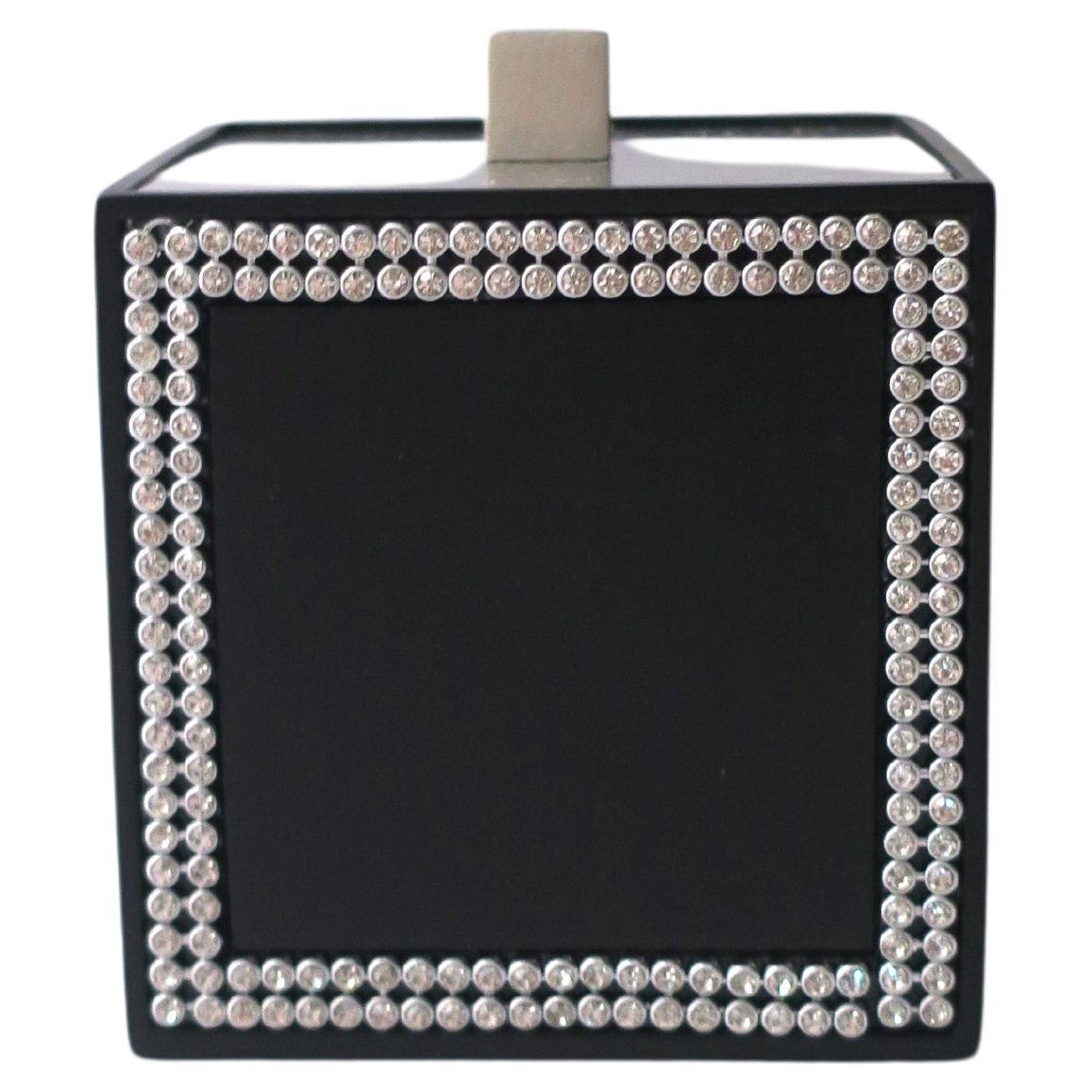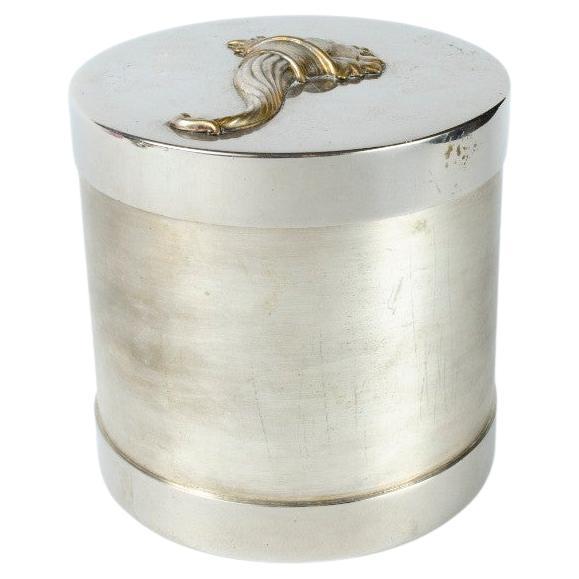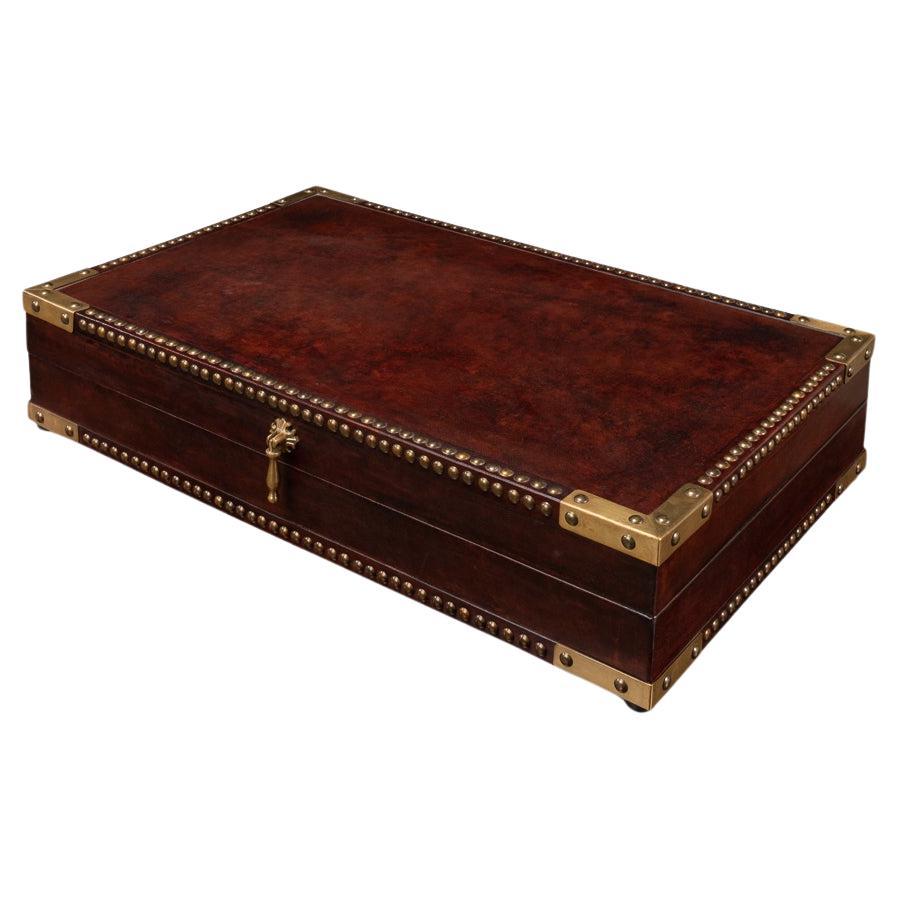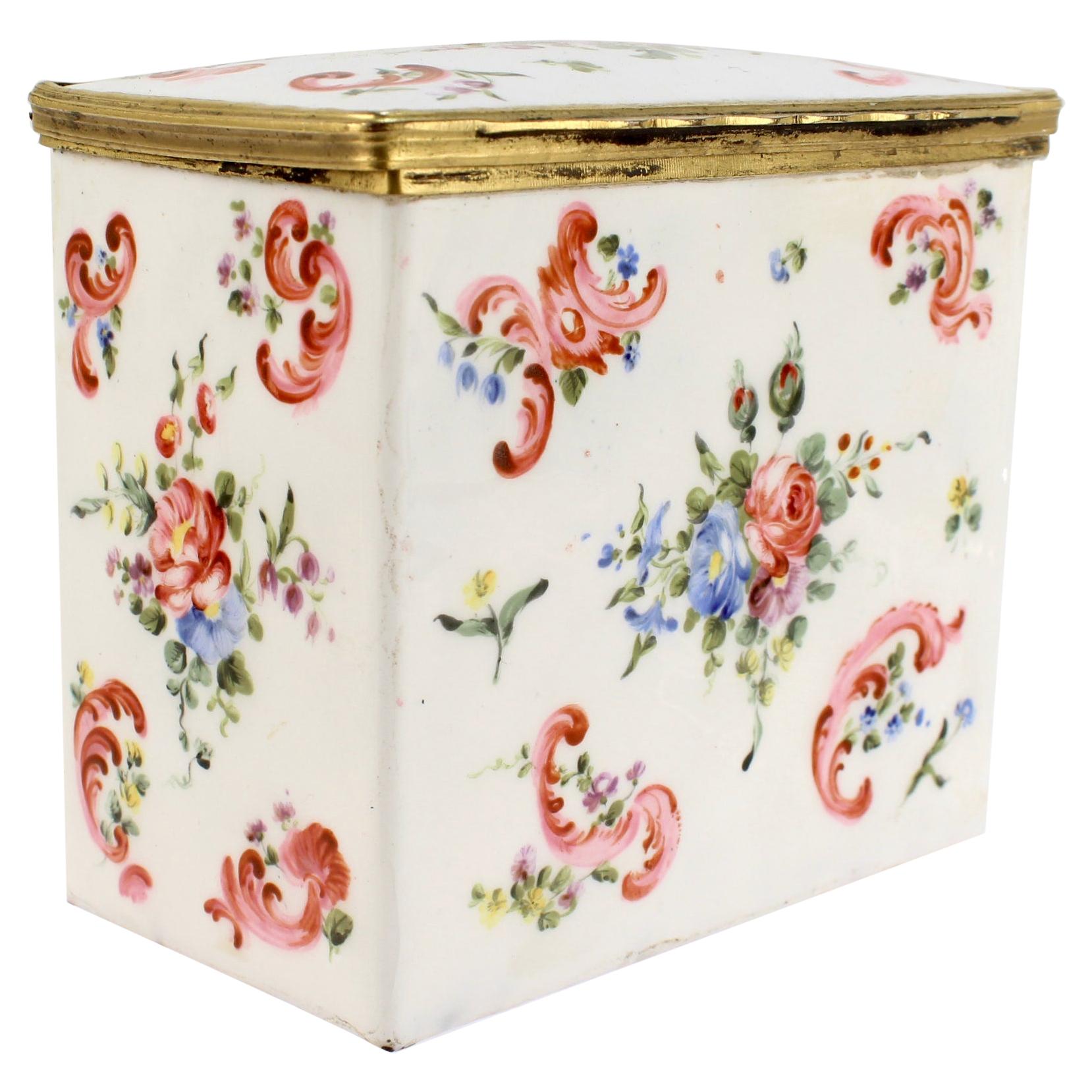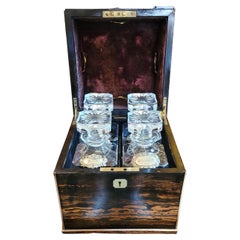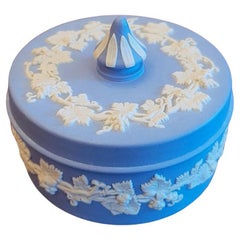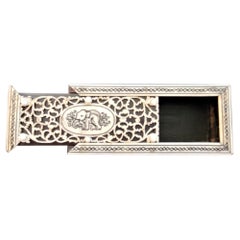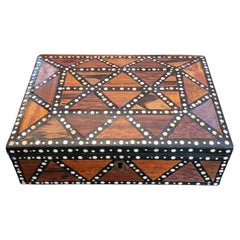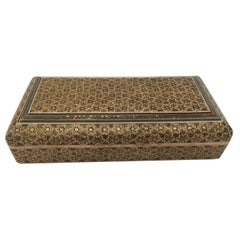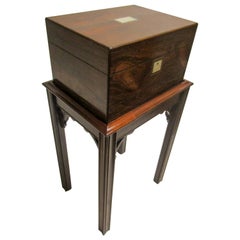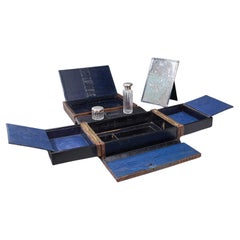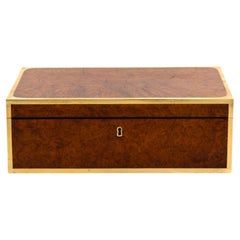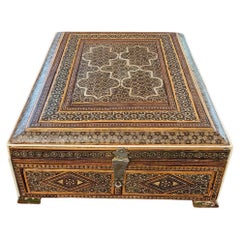
18C Indo-Persian Campaign Vanity Box
View Similar Items
Want more images or videos?
Request additional images or videos from the seller
1 of 12
18C Indo-Persian Campaign Vanity Box
$5,800List Price
About the Item
- Dimensions:Height: 5 in (12.7 cm)Width: 10.75 in (27.31 cm)Depth: 14.5 in (36.83 cm)
- Style:Anglo-Indian (Of the Period)
- Materials and Techniques:
- Place of Origin:
- Period:
- Date of Manufacture:1780-1800
- Condition:Repaired: The box is overall in very good original condition. The mirror is a more recent replacement. The interior of the bottom drawer has been painted gold. Most importantly, the inlay is excellent. Wear consistent with age and use. Minor losses. Minor structural damages.
- Seller Location:Dallas, TX
- Reference Number:1stDibs: LU3978132339072
About the Seller
4.9
Vetted Professional Seller
Every seller passes strict standards for authenticity and reliability
Established in 2015
1stDibs seller since 2018
390 sales on 1stDibs
Typical response time: 2 hours
Authenticity Guarantee
In the unlikely event there’s an issue with an item’s authenticity, contact us within 1 year for a full refund. DetailsMoney-Back Guarantee
If your item is not as described, is damaged in transit, or does not arrive, contact us within 7 days for a full refund. Details24-Hour Cancellation
You have a 24-hour grace period in which to reconsider your purchase, with no questions asked.Vetted Professional Sellers
Our world-class sellers must adhere to strict standards for service and quality, maintaining the integrity of our listings.Price-Match Guarantee
If you find that a seller listed the same item for a lower price elsewhere, we’ll match it.Trusted Global Delivery
Our best-in-class carrier network provides specialized shipping options worldwide, including custom delivery.More From This Seller
View All19C Irish Coromandel Wood Campaign Decanter Box
Located in Dallas, TX
PRESENTING A STUNNING 19C Irish Coromandel Wood Campaign Decanter Box.
STUNNING mid-Victorian Decanter box from circa 1860-1880.
Made in Dublin...
Category
Antique 19th Century Irish Campaign Decorative Boxes
Materials
Crystal, Silver, Brass
$4,250 / set
Wedgwood Jasperware Pale Blue Small Circular Lidded Vanity Box
By Wedgwood
Located in Dallas, TX
PRESENTING A LOVELY Wedgwood Jasperware Pale Blue Small Circular Lidded Vanity Box.
Made by Wedgwood in England in 1982 and fully and properly marked/stamped on base.
Marked: “Wedgwood, Made in England …. “PH” … “T” ….. “82”.
2.25 inches tall lidded vanity box with a diameter of 3.25 inches.
Rolling vine and grape cameo reliefs, all over the lid and base sides.
Fabulous large pointed finial on the lid with floral cameo reliefs on the sides.
In very good original condition with no chips or cracks.
A ‘PERFECT’ match for the larger and almost identical, lidded jasperware box...
Category
20th Century English Neoclassical Revival Decorative Boxes
Materials
Ceramic
19C Anglo Indian Vizigapatam Stamp Box
Located in Dallas, TX
Presenting an absolutely gorgeous and very rare 19C Anglo Indian Vizigapatam stamp box.
Made in Colonial India (the Time of the Raj) circa 1860.
Prob...
Category
Antique Mid-19th Century Indian Anglo-Indian Decorative Boxes
Materials
Bone, Shell
19C Anglo Ceylonese Specimen Wood Trinket Box
Located in Dallas, TX
PRESENTING A BEAUTIFUL and RARE 19C Anglo Ceylonese Specimen Wood Trinket Box.
Made in ‘Galle’, Ceylon (now Sri Lanka) circa 1860-80.
Made for the ex...
Category
Antique 19th Century Sri Lankan Anglo-Indian Jewelry Boxes
Materials
Bone, Hardwood, Ebony, Sandalwood
19C Anglo Ceylonese Sewing Box of Museum Quality
Located in Dallas, TX
Presenting an absolutely stunning 19c Anglo Ceylonese sewing box of museum quality.
Made in Ceylon (now Sri Lanka) circa 1860, this is one of the finest sewing boxes of it’s kind that we have ever seen!
The box is made from coromandel wood (an exotic hardwood found in Ceylon) and has a serpentine edging all over the front, back and sides.
Very often the lids/tops of these boxes suffer cracks due to shrinkage but this one is near perfect with no crack in the lid/top. There is some evidence of natural shrinkage but that is around the edges of the lid/top.
It is when you open this box that it reveals it’s true beauty, quality and treasure !
The inside of the lid/top is heavily and beautifully decorated with inlaid bone in scrolling floral patterns which have then been hand painted with red and black ‘lac’ ink. The central medallion is a circle of inlaid specimen exotic hardwoods radiating towards a central bone and hand painted flower. The circle is edged in bone, wood and silver chevrons.
What makes this box Exceptionally rare is that it contains 3 lift out base sections. Normally, there would be a maximum of 2.
The first tray/section is clearly for the purposes ancillary to sewing with a pair of sections with bone spools for thread etc. There are 17 other lidded compartments with each one highly decorated using hand painted bone and specimen woods to replicate tortoiseshell.
The first tray lifts out to reveal a second removeable tray which is made up of a pair of open sections and 8 specimen wood lidded sections each with chevron banding.
The third tray is a smaller tray underneath with 14 lidded compartments each with hand painted bone and specimen wood inlaid lids again, replicating the look of tortoiseshell. Again they are banded with a chevron border.
This is a museum quality piece !
It is in fantastic condition for it’s age with the minor shrinkage to the edges of the lid/top, some finger pulls missing and some very minor cracks to the tray lids and bases but nothing that in any way detracts from the piece. No key.
Dimensions: Closed the box is 16.75 inches wide, 11.25 inches deep and 7.5 inches high
Fully open the box is 16.5 inches high, 16.75 inches wide and 11.4 inches deep
Anglo-Indian and ceylonese boxes: Anglo Indian boxes were made in India for the English residents from the early part of the 18th century. They were brought back or sent back to England usually by the people who had commissioned them. From the beginning of the nineteenth century they were imported more commercially, although not in any significant numbers until the middle decades. They were very highly valued, especially the early ones, to the extent that the designs were copied on late 19th and early 20th century tins.
Anglo-Indian boxes normally consist of 3 main types:-
(1) Most of the best and highest quality Anglo-Indian boxes in the 18th and 19th centuries were made in Vizagapatam, India, renowned for its exquisite craftsmanship in using ivory and tortoiseshell and lac decoration. These are referred to as ‘Vizagapatam Boxes...
Category
Antique Mid-19th Century Sri Lankan Anglo-Indian Decorative Boxes
Materials
Silver
19C Anglo Indian Bombay MOP Sadeli Mosaic Trinket Box
Located in Dallas, TX
PRESENTING a LOVELY 19C Anglo Indian Bombay MOP (Mother of Pearl) Sadeli Mosaic Trinket Box from circa 1875-85.
Gorgeously detailed and hand-crafted ‘sadeli mosaic’ inlay, from the Bombay Area, with deep greens with silver, pewter, mother of pearl, bone and ebony in geometric patterns.
The box case, is made of sandalwood but completely covered in MOP, bone, faux ivory, ebony and mosaic inlay.
Edged with faux ivory and banded with a different pattern of sadeli mosaic.
Some minor damage to the top (repair is obvious in pics) and ivorine replacements to some edging, but it still a BEAUTIFUL BOX and of real QUALITY!
The mosaic work is FABULOUS!
Box opens to reveal its original blue velvet lining.
It sits on 4 (recently added) silvered button feet.
SADELI MOSAIC: “Anglo Indian boxes were made in India for the English residents from the early part of the 18th century. They were brought back or sent back to England usually by the people who had commissioned them. From the beginning of the nineteenth century they were imported more commercially, although not in any significant numbers until the middle decades. They were very highly valued, especially the early ones, to the extent that the designs were copied on late 19th and early 20th century tins.
The ancient art of Sadeli Mosaic is said to have been introduced from Shiraz in Persia via Sind to Bombay, a long time before the Anglo Indian boxes were made. It was a technique, which required a high degree of skill and patience. It was executed very lavishly, in that the frequent cuts wasted a great amount of the precious materials used. The workmanship was however more than commensurable to the value of the materials.
Ivory, silver, pewter (or other metals), wood and horn were cut into faceted rods which were bound together to form geometric patterns. When the glue has set, the rods were sliced in transverse sections. This gave the maker a number of angled circular pieces in the original pattern. Several variations of patterns could be achieved by combining the materials in different ways. The ivory was sometimes dyed green to give an extra color.
The mosaic pieces in a combination of patterns, often separated by ivory, ebony, horn or silver stringing were used to veneer sandalwood boxes. In the early boxes, which date from the turn of the 18th to the 19th century, there are large panels of mosaic covering tops and sides of boxes. It took incredible skill to cover such large areas without any shakes or wavering of the pattern. The corners and joins on these boxes are impeccably matched.
The makers (reputed to be Persian) of Sadeli mosaic made in the first two decades of the 19th century displayed a total understanding of the qualities of the different materials they used. They combined substances, which can expand and contract according to atmospheric conditions with others, which are hard and unyielding. The result was a sharp definition of the lines and patterns, which made up the whole design.
On the early boxes the designs look deceptively simple. The fact is, they emerged from a culture, which had mastered geometry and understood how to generate a pattern from a set number of points. The patterns are so harmoniously combined that their incredible complexity is not immediately apparent.
The earliest Sadeli boxes...
Category
Antique Late 19th Century Indian Anglo-Indian Jewelry Boxes
Materials
Silver
You May Also Like
Indo-Persian Khatam Micro Mosaic Jewelry Box
Located in North Hollywood, CA
Handcrafted Khatam wooden box with very delicate micro mosaic marquetry from the ancient Persian technique of inlaying from arrangements of so many delicate pieces of wood, precious wood, and delicate miniatures paintings.
This beautiful Middle Eastern Persian style box is covered inside and out with fine Moorish micro mosaic marquetry.
Indo Persian Moorish style micro mosaic inlaid jewelry box with lid.
Intricate inlaid Asian Indian box with floral and geometric Islamic
Moorish Sadeli design in a square shape form with inlay marquetry, very fine artwork, lined in red velvet.
Museum collector piece like the one in Doris Duke Islamic Art Museum.
The repeating geometric patterns of Sadeli Mosaic are what give it beauty and richness. This decorative technique is a type of micro mosaic featuring repeating geometric patterns. A highly skilled craft, it has had a long history in India and the Middle East with early examples dating back to the 16th century. In the 1800s, it became popular as a decoration on a variety of boxes, card cases, and chess boards imported from India. Since Bombay became a center of making them, they became known as Bombay boxes...
Category
Mid-20th Century Asian Moorish Decorative Boxes
Materials
Wood
Rosewood Gentleman's Military Campaign Vanity Box with Secret Drawer
Located in Savannah, GA
This handsome rosewood English vanity box retains the original glass bottles and jars with silver plated tops, 19th century. The inside reveals multiple compartments and a spring loaded lever opens the secret drawer...
Category
Antique 1840s English Victorian Decorative Boxes
Materials
Silver Plate
Antique Travelling Vanity Box, English, Campaign Correspondence Case, Victorian
Located in Hele, Devon, GB
This is an antique travelling vanity box. An English, leather bound campaign correspondence case, dating to the late Victorian period, circa 1880....
Category
Antique Late 19th Century British Decorative Boxes
Materials
Leather
Campaign Anglo-Indian Amboyna Jewelry Box
Located in Northampton, GB
Exotic Amboyna
From our Jewellery Box collection, we are delighted to introduce this large Anglo-Indian Campaign Amboyna Box. The Amboyna Box of large rectangular form veneered in b...
Category
Antique Mid-19th Century Indian Anglo-Indian Jewelry Boxes
Materials
Brass
Antique English Victorian Walnut Burl Inlaid Campaign Jewelry Chest Vanity Box 1
Located in Dayton, OH
A superb antique 19th century English Victorian burled walnut travel campaign vanity box featuring inlaid brass fruit basket motif with mother of pe...
Category
Antique Late 19th Century Victorian Decorative Boxes
Materials
Walnut
$1,600 Sale Price
20% Off
Persian Box Khatam Kari Footed Wooden Round Jewelry Vanity Trinket Moorish Box
Located in North Hollywood, CA
Late 19th c. early 20th c. Persian Footed Wooden Round Jewelry Box.
Antique rare in round shape large Persian wooden box with marquetry called "Sadeli" or "Khatam Kari" with exquisit...
Category
Late 20th Century Indian Islamic Decorative Boxes
Materials
Brass
